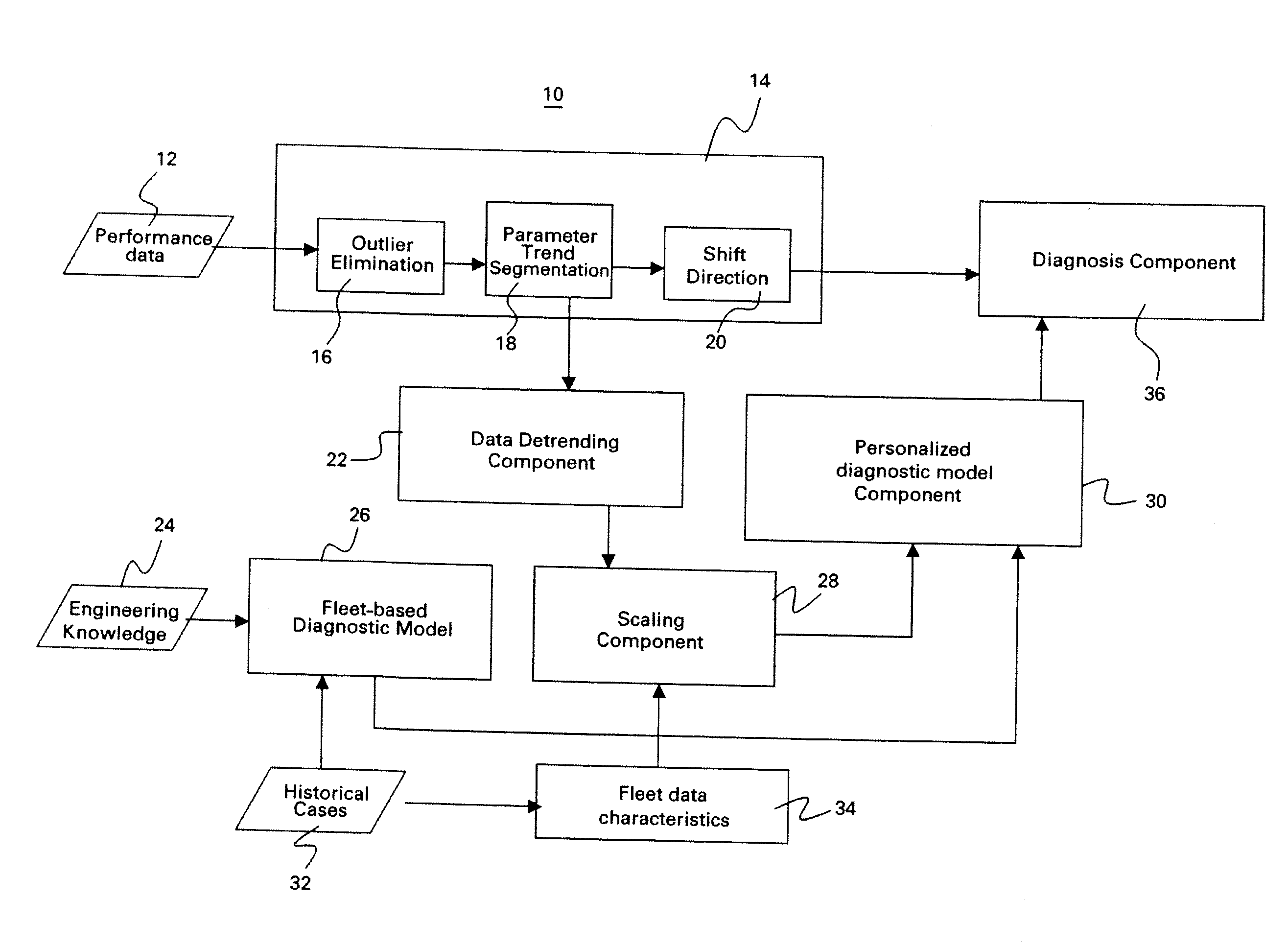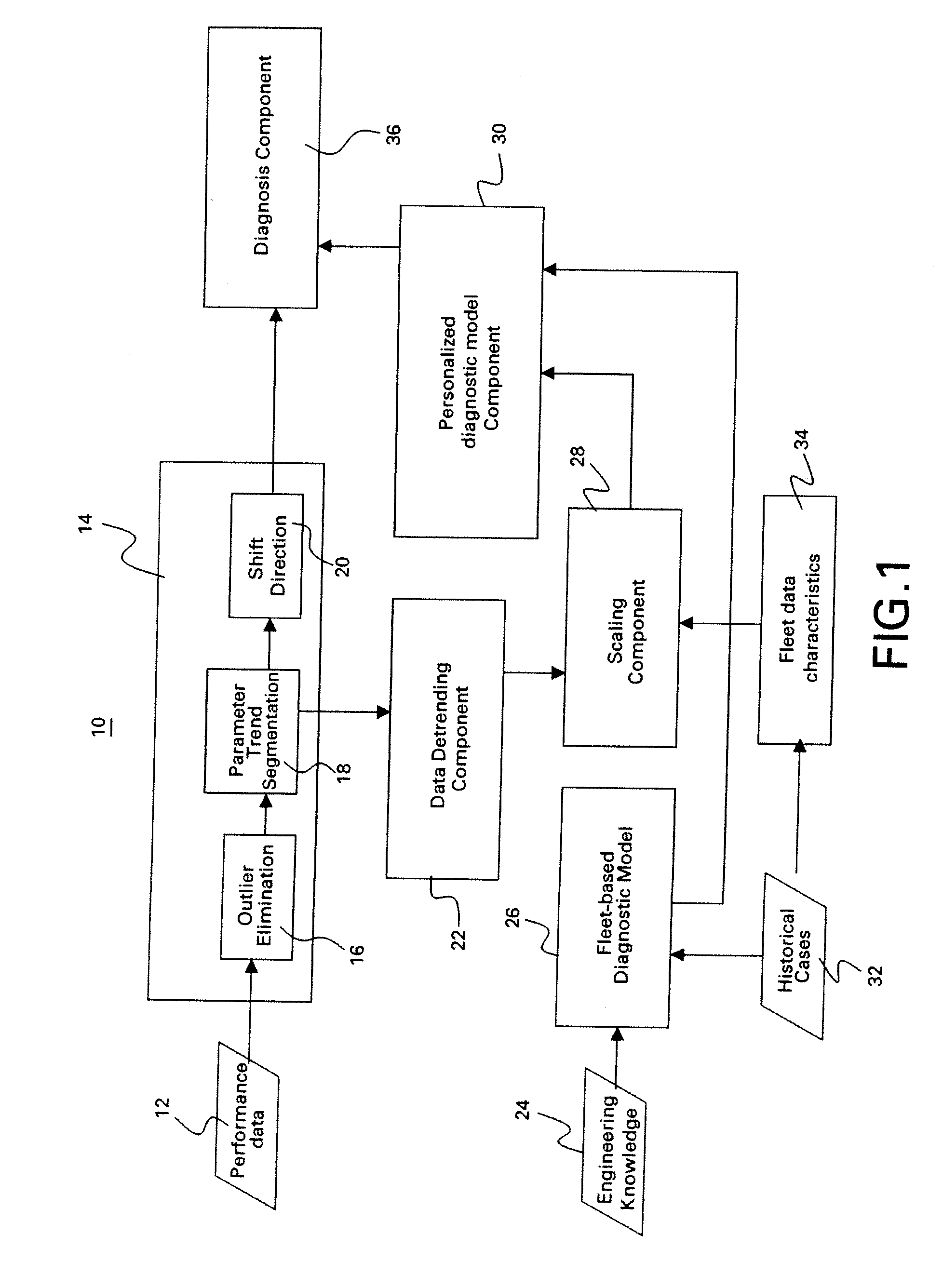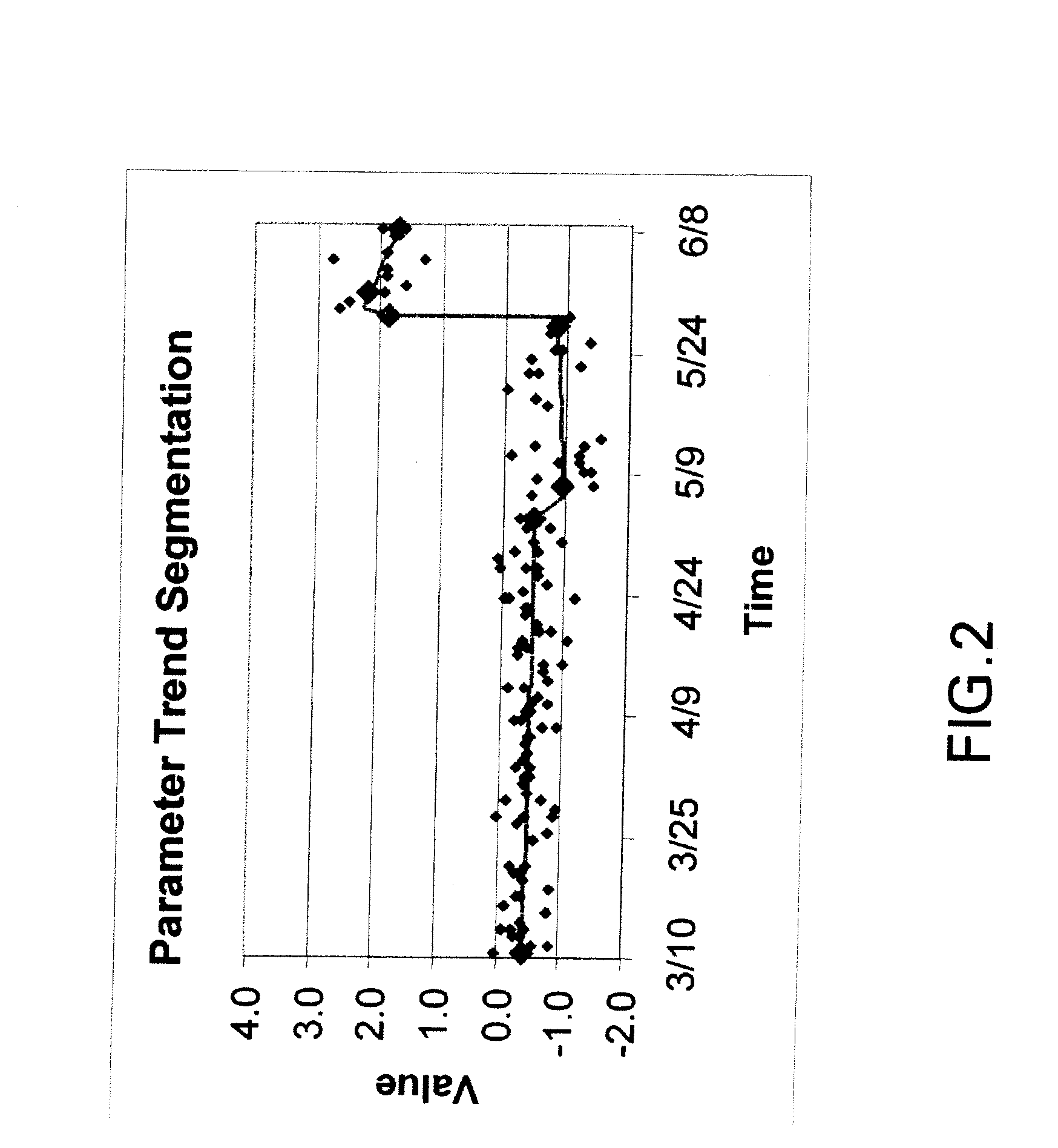Method and system for diagnosing faults in a particular device within a fleet of devices
a technology of faults and fleets, applied in the field of automatic diagnostic systems and methods, can solve problems such as false positive failure to provide accurate diagnostics, and missed detections or false negatives
- Summary
- Abstract
- Description
- Claims
- Application Information
AI Technical Summary
Benefits of technology
Problems solved by technology
Method used
Image
Examples
Embodiment Construction
[0016]FIG. 1 is an illustration of an exemplary system for detecting faults in a particular device within a fleet of devices in accordance with one embodiment of the invention. As shown in FIG. 1, the system 10 includes a trend shift detection component 14, a data detrending component 22, a fleet-based diagnostic model 26, a scaling component 28, a personalized diagnostic model component 30 and a diagnosis component 36. In one embodiment, the fleet of devices includes aircraft engine systems. The diagnostic system and method disclosed in accordance with embodiments of the present invention, may however be used in conjunction with any mechanical system, electrical system, electromechanical system or biological system. Further the disclosed diagnostic system and method may also be used to detect faults in a “subset of devices” within a fleet of devices. As used herein, a “subset of devices” refers to one or more devices in the fleet of devices having similar data characteristics and s...
PUM
 Login to View More
Login to View More Abstract
Description
Claims
Application Information
 Login to View More
Login to View More - R&D
- Intellectual Property
- Life Sciences
- Materials
- Tech Scout
- Unparalleled Data Quality
- Higher Quality Content
- 60% Fewer Hallucinations
Browse by: Latest US Patents, China's latest patents, Technical Efficacy Thesaurus, Application Domain, Technology Topic, Popular Technical Reports.
© 2025 PatSnap. All rights reserved.Legal|Privacy policy|Modern Slavery Act Transparency Statement|Sitemap|About US| Contact US: help@patsnap.com



